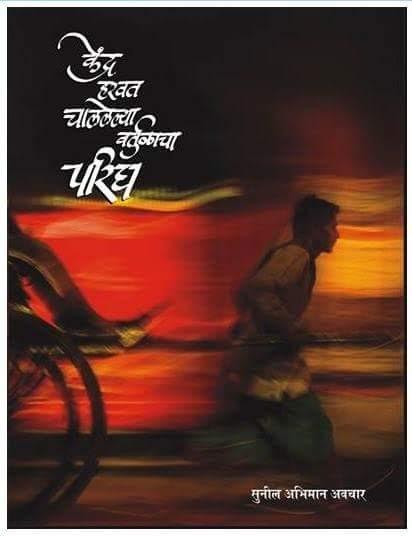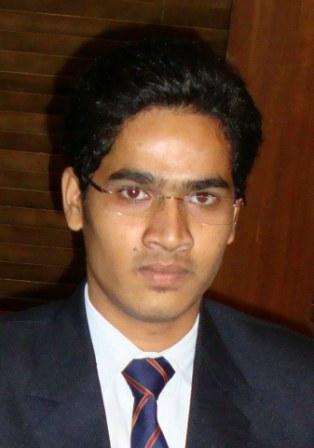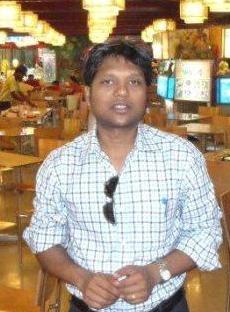Satyashodhak
 “The mischief done by the Brahmin scholars to historical research is obvious. The Brahmin scholar has a two-fold interest in the maintenance of the sanctity of this literature. In the first place, being the production of his forefathers, his filial duty leads him to defend it even at the cost of truth. In the second place as it supports the privileges of the Brahmins, he is careful not to do anything that would undermine its authority. The necessity of upholding the system by which he knows he stands to profit , as well as of upholding the prestige of its forefathers as the founders of the system, acts as a silent, immaculate premise which is ever present in the mind of the Brahmin scholar and prevents him from reaching or preaching the truth. That is why one finds so little that is original in the field of historical research by Brahmin scholars unless it be a matter of fixing dates or tracing genealogies.” ~ Dr.Babasaheb Ambedkar in ‘Who were the Shudras’.
“The mischief done by the Brahmin scholars to historical research is obvious. The Brahmin scholar has a two-fold interest in the maintenance of the sanctity of this literature. In the first place, being the production of his forefathers, his filial duty leads him to defend it even at the cost of truth. In the second place as it supports the privileges of the Brahmins, he is careful not to do anything that would undermine its authority. The necessity of upholding the system by which he knows he stands to profit , as well as of upholding the prestige of its forefathers as the founders of the system, acts as a silent, immaculate premise which is ever present in the mind of the Brahmin scholar and prevents him from reaching or preaching the truth. That is why one finds so little that is original in the field of historical research by Brahmin scholars unless it be a matter of fixing dates or tracing genealogies.” ~ Dr.Babasaheb Ambedkar in ‘Who were the Shudras’.
The serial “Mahamanavachi Gauravgatha” in Marathi, on Dr B.R. Ambedkar has been running successfully for the past one year since 18th of May, 2019 and has recently completed 300 episodes. It seems to have gained popularity with the high TRP ratings for the show. It all seems very rosy and emancipatory, but once we look deeper you will find major issues with it.
In the powerful book Hatred in the belly, Kuffir (one of the founder editors of Round Table India) says that the Bahujan allowed the Brahmin to enter into their little shrines, to control the worship of their holy stones, trees, fruits, etc. They invited the Brahmin to introduce their own gods to themselves. That is how appropriation happens.
Considering that this is a complex subject, I would like to divide this article into 2 parts. Part 1 of the article is focussed on structural issues with the serial. As far as my own location goes, I am from the Buddhist community, born and raised in Maharashtra with a family history of being involved in the anti-caste movement. The other members of the group are also from an anti-caste Bahujan background.
In the serial Mahamanavachi Gauravgatha, the composition of the key actors & crew are given in the table below. Let us take a look at some of the lead actors and crew and their roles in it:
A cursory glance at the overall actors & crew gives an idea of their caste locations and it would suffice to say that most of them are Brahmins or Upper Caste Savarnas*.
The same pattern is being followed in the other serial called Savitri Jyoti, based on the Phule family, that gets telecast on Sony Marathi, produced by the same Dashami Creations. If you see the key positions in the team, most of them are occupied by the Brahmin, Upper Caste Savarnas.*
If the makers of the serial are so keen on bringing Babasaheb to all corners of Maharashtra, then how is it possible that they couldn’t think of having more people from Scheduled Castes/Scheduled Tribes/OBC in the main cast/crew? How is it that out of an approximate population of 11.5 crores in Maharashtra itself, out of which let’s assume 75% i.e almost 8 crores are SC/ST/OBCs (even if Caste Census data of 1931 is taken as a reference), they couldn’t find 8-10 actors from them who could play key roles? The larger question of representation, as it gets more and more complicated, must be critically examined, in this case as well. For the purpose of definition, I would call SC, ST, OBC as Bahujan in the write-up.
If it is a question of TRPs, does Dashami Creations (in all of the lead roles), assume that the people of Maharashtra State would be unwilling to spend their time, resources to watch the serial if the lead actors are from the communities which icons like Ambedkar and Phule belong to? Does that mean masses will only know about Dr. Ambedkar if a Dashami Creations (composed primarily of Upper Castes) tells a story about Bahujan icons using actors who are primarily upper castes? So do Bahujan masses should continue to only clap/applaud for the serial, while all the major revenues goes to a set of people, who have no emancipatory agenda for the oppressed sections in their mind, but are only interested in earning revenues from the serials? Do the Bahujans continue to be only the consumers in this caste mode of production?
If you look at scenarios in other parts of the world, let’s say Hollywood movies or TV series, in recent times most characters from oppressed community have actors from their own community portraying them, after prolonged and consistent protests from black communities when white actors played the role of black icons. The entire Black movement stresses on that aspect. We have seen all the academy award speeches by leading actors, directors who speak about diversity and the efforts needed to improve diversity.
A few months back, Sujay Dahake, an upcoming director from the Marathi film industry, spoke about the domination of Brahmins in the Marathi TV and film industry.
This is not new to Indian entertainment industry. A similar analogy is Bimal Roy’s movie Sujata (1959), in which the Brahmin protagonist Adhir Chaudhary (Sunil Dutt) falls in love with an ‘untouchable’ Sujata (Nutan). Nutan is being shown as dark skinned to highlight her untouchable caste identity in the film, the makers didn’t feel the need to have anyone from the Dalit community to portray the role.
Tapan Sinha’s movie Zindagi Zindagi (1972), in which Sunil Dutt plays a doctor who belongs to an ‘untouchable’ family: the movie features not one, but two inter-caste love stories. But here too, the makers didn’t feel the need to have anyone from the Dalit community as any of the actors.
Has the situation changed? Is it that non-Brahmin actors are difficult to find, especially in the state of Maharashtra? Or are they not saleable for TRPs, ratings? On what study is this based on? Or is it just the lack of will and intent to do it? Or is it just a casteist way of thinking and plain refusal to take obvious steps?
Diluting the Power of Autonomy
Dr. Babasaheb Ambedkar printed, published, distributed the iconic book Annihilation of Caste (AoC) out of his own pocket in 1936. The cost (selling price) was 8 annas at that time.
Babasaheb was a great believer in autonomy. He created institutions, published 5 journals/newspapers even when Upper castes and corporate groups were ready to support him. He was a firm believer that our stories should be told by us. Our histories should be told by us.
In Maharashtra itself, there is a rich history of Phule-Ambedkar anti-caste movement. Many poets like Vithal Umap, Wamandada Kardak and other autonomous groups have spent their entire lives travelling the length and breadth of the state to share their stories. What the Brahmin class wants to prove by such serials is that we (Brahmins) are superior and we will teach your Bahujan people about Babasaheb and his life. Your own people have been unsuccessful in talking about Babasaheb and have not been able to reach interiors of Maharashtra with your work, but see, we can do it. They want you to forget all the efforts of the earlier generations.
There is a history of manipulating public opinion since 70s, 80s with TV entertainment. There is the concept called Cultivation Theory in Media Studies, which says how a TV programme envisions to change the perception, knowledge, belief, preference, behaviour of a certain class of audience within a given target time, through their shows. Like what Ramayan, Mahabharat kind of TV shows did to people in India and now it is reemphasised with the retelecast.
Aparna Padgaonkar, a representative of Dashami Creations, said, “When you say Babasaheb, there is a misconception in the society that he is the one who gave people the concept of reservation. He is called the emancipator of the backward classes this is our ignorance. It is difficult to change the situation unless his history reaches everyone. I believe that as a woman I am very grateful to him. This is a small attempt to pay my tribute to him.”
Now, if one looks closely, who are the people who didn’t allow Dr. Ambedkar’s contributions to come to textbooks and universities all these years? Normally, in any school textbook, there is at the most only a fleeting reference to Dr. Ambedkar as one of the architects of the Indian Constitution. Wouldn’t it have been a fitting tribute to Dr. Ambedkar to cast more people from Bahujan community in the serial?
Why does the state or country need a Dashami Creations to talk about Babasaheb or Phule? Its purpose seems similar to what Arundhati Roy did when she wrote an introduction to AoC: “She is writing The Doctor and the Saint so that AoC gets read by other sections of the society”. Autonomous Bahujan groups spend much more efforts and get much less space in the mainstream media for their efforts.
The entire set of writings of Dr. Ambedkar is available in the government printing presses across the state of Maharashtra as well as with local publishers. They are available at very reasonable rates. The writings are also available online on the website www.mea.gov.in .
Bahujan Rangbhoomi and Sammyak theatre group are examples from the Nagpur region of Maharashtra that showcase how autonomy can be a success. Sammyak group runs the successful play Mahasurya (among others), which is on the life of Dr. Ambedkar, with 150 artistes, to packed houses throughout Maharashtra. The caste composition of the play is primarily Bahujans from the SC/ST/OBC communities.
Same with Bahujan Rangbhoomi run by Mr.Virendra Ganvir. This group has done plays for almost 30+ years across Maharashtra on various social issues.
Both of these groups get a fraction of the media coverage that Dashami Creations gets.
Forgery with aesthetics and the violence of language
The reason for my opposition is not that I believe that only a Bahujan can represent a Bahujan in recreations of his/her life. Instead, my observation comes from the fact that when an oppressor class represents the life of the oppressed class, there is a recreation of violence that permeates such a representation. Sagar Deshmukh (the person portraying Babasaheb in the Marathi serial) is being seen as speaking in chaste, Brahminical “pure” Marathi throughout the serial. This is a linguistic violence imposed on the Bahujan masses.
Babasaheb was known for his flair for languages and dialects & accents. He would know the Vidarbha dialect of Marathi when interacting with people from the Vidarbha region, Marathwada dialect of Marathi when interacting with people from Marathwada region, Konkan dialect of Marathi while interacting with people from the Konkan region, and so on.
He was also deft at switching to a different style while speaking with Marathi Brahmins in Marathi.
Whereas in the serial he speaks in chaste Marathi with everyone, even with a poor labourer from Konkan region, for example. While it might be argued that it might be needed for the TV audience but is that the only option? The option of using Marathi subtitles could have been thought of in sequences that involved different dialects of Marathi. In fact, in our time of realistic cinema, the closer the protrayal on screen is to reality, the better the appreciation. Unless, the directors and screenwriters have taken an artistic freedom to Brahminize the on-screen portrayal of Dr Ambedkar, the choice of using Brahminical “pure” Marathi remains unexplained. There is always a direct relation between caste and language. Language has been a tool of distinction and oppression, as maintained by Brahmins historically. In the current times, many regional/Bahujan dialects are delegitimised against “standard” “Sanskritized” language. However, we can question this within the limit of the reality expected from a TV serial, as they can escape this easily.
The Marathi movie Sairat was warmly accepted by the entire Maharashtra/Marathi audience even though the dialect of Marathi was so different than the one normally shown on screen. It still ended up as a commercial success. The fact that it was directed by a Bahujan filmmaker and had lead actors from the Bahujan background may not be a coincidence.
Whose purpose does such fabrication serve? Why does Upper caste knowledge production do that?
I got an opportunity to speak with Mr. Ramesh Shinde,who is a senior Ambedkarite with a huge collection of first edition Ambedkar books, many of which he has painstakingly preserved.
While speaking to the author, he touched on certain aspects of the serial. He has seen Babasaheb’s every speech delivered in Mumbai from 1930s onwards till his death. He is also aware of many finer aspects of Babasaheb’s life. Let me share a few key highlights from his views:
1. He is clearly unhappy with the kind of Marathi dialect Babasaheb is being shown speaking throughout the serial. He has seen Babasaheb speak different dialects of Marathi depending on the audience he had, both in public as well as in private.
2. Ramabai Ambedkar (wife of Dr.Ambedkar) never spoke “chaste”, ”Brahminical” Marathi. Her Marathi was of a local dialect. Why is it being shown differently in the serial? Similar is the case of showing a fair-skinned Ramabai. Ramabai did not have a fair skin complexion.
3. Babasaheb’s clothes in childhood are being shown as being those of the rich. Ramji Sakpal (Babasaheb’s father) had a monthly salary of 50 Rupees and a big family. Babasaheb did not have fancy clothes to wear.
In this entire aspect of structures and aesthetics, the portrayal of Dr. Ambedkar is different from the way than it really was. The question to the makers is, what was the need to change these aesthetics? Would showing of the reality have offended the people watching it?
The key players in the serial might win all TV awards in the future, thereby treating Babasaheb as a commodity, whereas the lives of the marginalised will continue to remain the same as they were earlier. In much the same way as upper caste researchers from national/international universities come and research on lives of the marginalised and progress in their careers, whereas the lives of the marginalised continue as they are.
I hope that Bahujan viewers of the serial think about these aspects and then start questioning all such makers of serials, movies, before readily accepting them.
~
To be continued.
*The author(s) have not physically checked the Caste locations of people mentioned in this article. This is based on discussions with people who know the Marathi movie industry and from their own understanding based on the surnames.
Jai Bhim !
~~~
Satyashodhak, believeing in the philosophies of Phule, Shahu, Ambedkar & Periyar!










